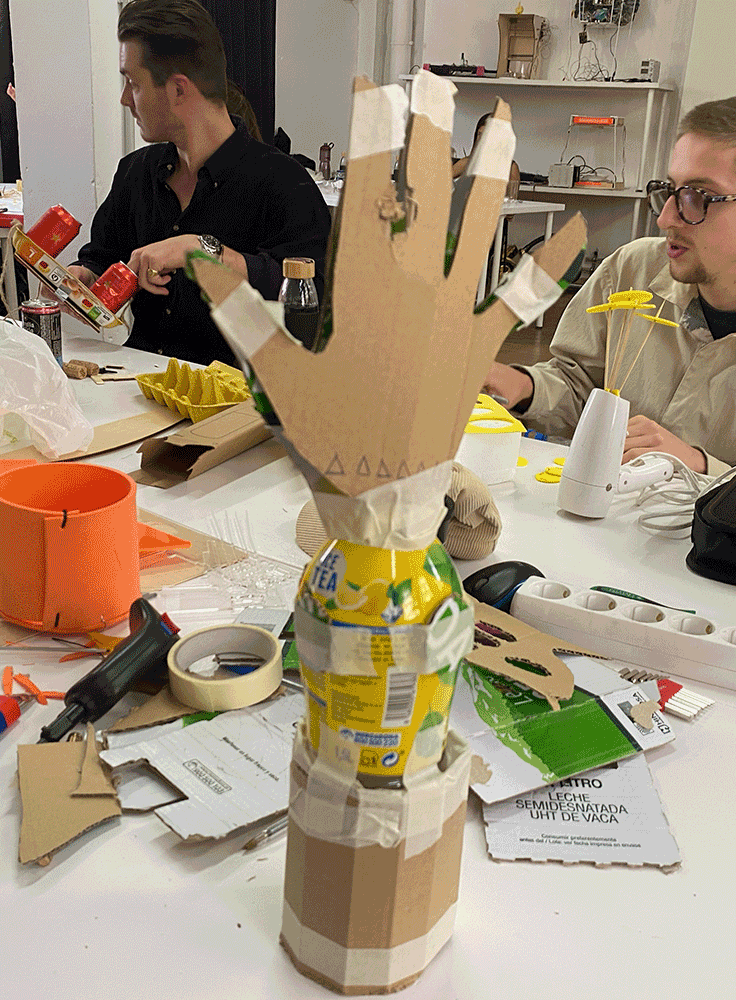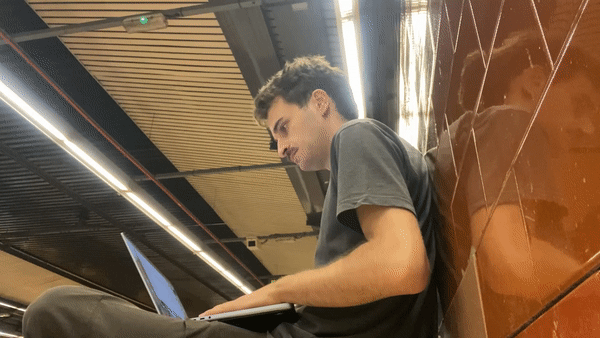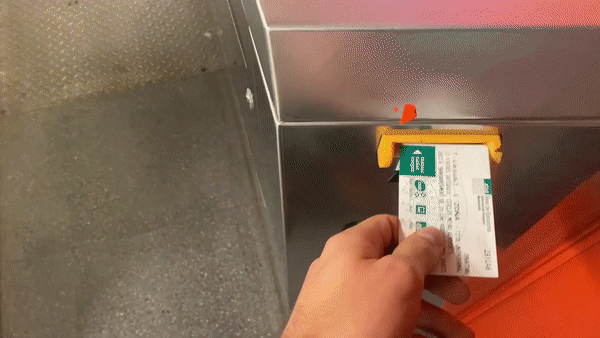Living With Your Own Ideas 🧠
31/10/2023 - 03/11/2023
This seminar had the goal of introducing us to the use of first-person perspective for research purposes. So we can start designing as part of the collective instead of being outsiders.
Starting the week!!
The week started by understanding exactly what the first-person perspective is, which involves the researcher/designer directly engaging in the study or sharing their personal experiences and feelings. This approach allows for a more subjective and intimate understanding of the topic, providing insight into individual thoughts, emotions, and behaviors. It can enhance empathy, promote participant engagement, and provide a deeper understanding of the social phenomena. However, researchers must be aware of the bias and subjectivity that can arise from using this approach and carefully consider the impact of it on the research outcomes. To start putting it into practice, we started by developing a companion. Using materials from the fab lab and rapid prototyping, each of us created a machine that would keep us company for a day. I created Handy, a robotic arm that will show its mood every day and will look for its user (me) to make contact with it. The idea is that the user will “please” the machine’s needs and in exchange the user will receive different types of contact every day, shaking hands, receiving a middle finger, a finger heart… I liked this idea because it changed the roles. Usually, the only function of the machines is to please us in any way we want. This machine will make the user take care of it and apply the first-person perspective of the machine (I’m not sure if this makes sense 😅). After building it, we brought the machines home, and started using them for a day. As the machines were conceptual, we needed to imagine them functioning. For that reason, I asked one of my roommates to put an alarm in my phone at a random hour and define a mood without telling me, that way, it would feel real. The machine offered me a high five at 14:27 and made me stop eating and go to my room fast just to interact with it. I have to say that it was interesting to test this, even though I don’t know if I did the exercise correctly, because it helped me start with the use of first-person perspective.

Applying 1PP
Next up, once the introduction to the first-person perspective was done, we were asked to apply the first-person perspective to our own interests. In this exercise, the goal was to create a video where we engaged in the study field we were interested in. In my case, even though my design space is constantly changing, I decided to apply it to underused urban spaces. By mixing it with the research that some of our classmates were doing on pollution in the metro, I decided to experiment with how it would feel to work inside the metro for a couple of hours and see how I felt after and what differences I noticed comparing it to my room. I think it was an interesting way to apply the first-person perspective in order to know if there is actually a real problem in the metro. The benefits of being present include understanding another point of view. By being more emphatic, I could think of ways to solve problems that I probably would not have thought of any other way.
By using myself as an instrument, I was able to see new things that I hadn’t even thought about, like how impersonal the metro space is, where people just wait for their metro to come and leave, most of the time without actually saying anything to each other, and also the difference in the air. I was inside stations and metros for a couple of hours, and when I got out, I really felt the need for fresh air. With this said, the pollution subject should be investigated in a deeper way, scientifically speaking. Just two hours inside doesn’t actually support any theory. In the future, if I want to continue this way of researching, I should do this experiment for more time and also extract scientific data that supports my hypothesis.

Using 1PP helped me learn a new way of approaching things. As an industrial design engineer, I’ve always done extended research on my projects, but without putting yourself in the position of your audience, even though you have a ton of data on the subject, you can realize that maybe it wasn’t that good of an idea. So from now on, I will definitely try to apply this as a previous phase to my future projects. Also, watching my classmate's videos helped me see the number of different possibilities of applying 1PP and the different subjects where you can do research using it. As I still don’t have a clear design space (Because it’s changing almost every day), I still cannot say confidently who I have common interests with. But from what I saw in the class, I really think that both Nicolò, who was doing biomaterials research, and Marius, who was doing AI research, could be great companions because both of those subjects can be applied to my research. With that said, before thinking about collaborating with anyone, I still need to get things straight in my head and figure out my design space.

